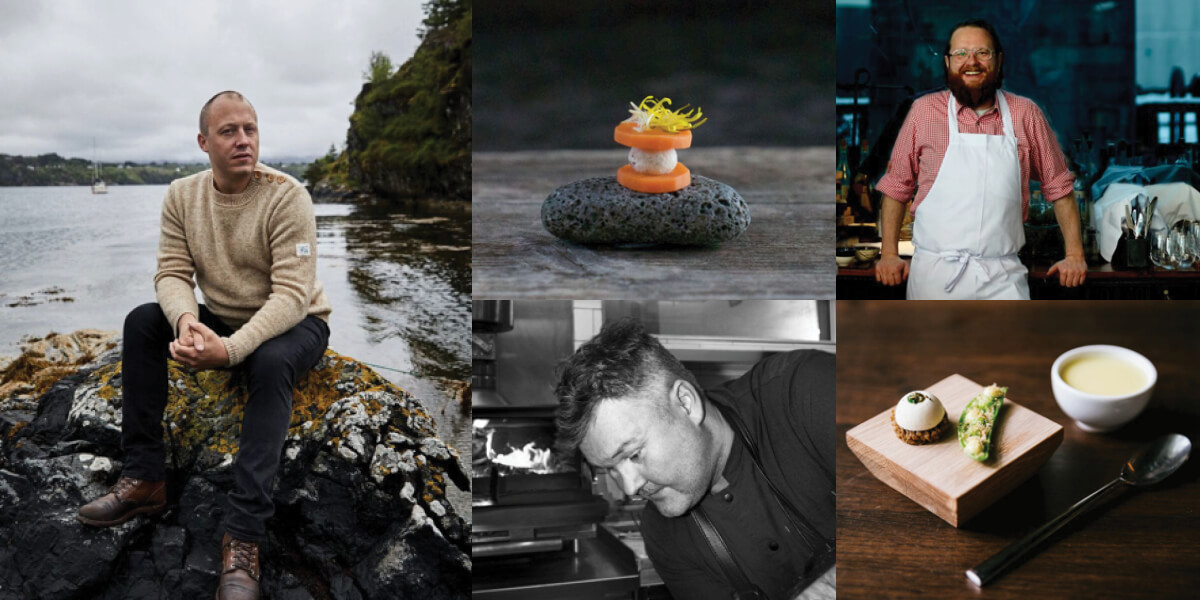
The Healthy Fine-Dining Revolution
This is an excerpt from Life, Awakened – a series of videos and articles that promote harnessing the power of sleep for those in pursuit of an active, healthy lifestyle.
Previously, you might not have thought of Scandinavia as an epicenter of destination-worthy dining. But, spurred on by the overwhelming success of René Redzepi’s game-changing Noma in Copenhagen, local acolytes of The New Nordic Food Manifesto (which Redzepi co-authored) have been opening restaurants across the region that consistently top world’s best lists.
It’s a movement that’s dovetailed with renewed interest in Nordic nutrition. Research has shown that the diet, which emphasizes ingredients like whole grains, dark berries, root vegetables, and oily fish, could contribute to improved sleep and cardiovascular health.
And while eating mainly plant-based foods, seafood, and wild-foraged ingredients might not sound radical now, that just goes to show how much of an impact these Scandinavian chefs have had on the way we all think about food—not least because a stint interning at one of the region’s best restaurants is practically a requirement for ambitious American cooks.
Though all very different, these six chefs share a common goal: to innovate fine-dining using hyper-local ingredients.
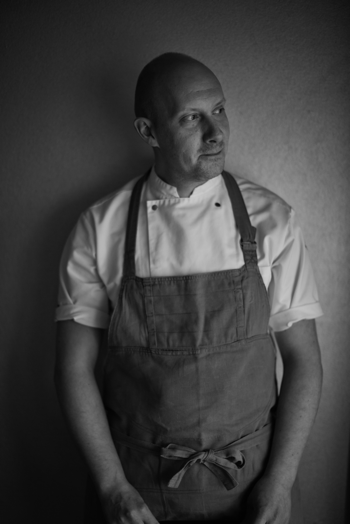
The Chef: Sasu Laukkonen
THE RESTAURANT: ORA IN HELSINKI, FINLAND
Laukkonen recently revamped his Michelin-starred restaurant in order to place a larger emphasis on Finnish ingredients. “My number one aim was to ditch the use of foreign produce that I really don't need,” says Laukkonen. “It’s about having gifted local people in the project at every level.” Even the tables and windows at the 23-seat spot are made nearby from Finnish glass and lumber (and designed by the chef himself). Laukkonen also believes in having work-life balance, which is why the restaurant is only open Wednesday through Saturday. “Having three days off allows for my staff to be energized and fully focused come Wednesday,” he says. It lets everyone have time to be outdoors and to travel, which Laukkonen does regularly so that he can cook with other chefs and see how they are using local produce in innovative ways.
THE MENU:
The constantly-changing six-course tasting menu responds to what Laukkonen refers to as microseasons. For example, “I love to salt-brine birch leaves,” he says. “They have to be foraged early in spring, and there’s only about a two-week window every year. After six months in a three percent salt solution they almost taste like olives.” A dish of beetroot with plum also incorporates wild reindeer heart. “Wild meat may be superior due to a decreased amount of saturated fat and can be higher in protein,” says Kristin Kirkpatrick, RD, manager of wellness nutrition services at Cleveland Clinic’s Wellness Institute. Venison meat also contains extremely high levels of iron, a key ingredient for high-quality sleep and one in which athletes are more at risk for being deficient.
The Chef: Christopher Haatuft
THE RESTAURANT: LYSVERKET IN BERGEN, NORWAY
Haatuft, who grew up skateboarding, cites the discipline it takes to stick with something—be it a sport or an occupation—as a driving force of creativity. That’s why the chef traveled extensively in his early career to work in challenging kitchens and hone his craft with culinary legend Thomas Keller (at Per Se) and slow food icon Dan Barber (at Blue Hill Stone Barns). Haatuft brought what he learned back home to Bergen, and in 2013 opened a restaurant that has fundamentally changed how Norwegian food is produced. Haatuft’s philosophy can be summed up in a term he coined, “fjoraging.” “We are on the fjord, and we are cooking a new style of food,” he says, “We joke around with it in the kitchen, but always with a serious undertone.”
THE MENU:
Haatuft not only champions native Norwegian ingredients that were otherwise ignored, but also asks partners like fishermen to explore new ways of treating their catch. “Take mahogany clams, for instance. The seabed is littered with them, but no one here has ever used them. Now they are on all fine dining menus,” says Haatuft.
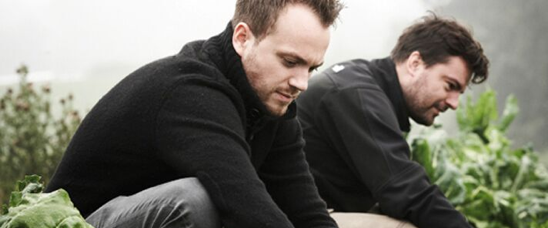

The Chefs: Jesper Kirketerp and Rasmus Kliim
THE RESTAURANT: RADIO IN COPENHAGEN, DENMARK
Co-founded by longtime Noma sous chef Jesper Kirketerp and another fine-dining alum, Rasmus Kliim, Radio is like Noma’s quirky-yet-serious kid sister. With just three servers and rough-hewn furniture, the casual space belies a kitchen incredibly dedicated to seeking out the finest ingredients Denmark’s now-thriving farming scene has to offer. The duo spends a great deal of time outside of the restaurant too, whether it’s fishing, foraging for elderberries or chanterelles, or learning how to surf. “We wanted to create a place that is welcoming, modern, and urban, yet strongly connected to the surrounding landscape and people that hold great value to us,” says Kirketerp.
THE MENU:
The three- or five-course tasting menus often feature brassica-derived rapeseed oil on tender lettuce leaves and a plate of lightly-cooked scallops. “Healthy fats are inherent in Nordic cuisine—especially the omega-3 fatty acids and polyunsaturated fats found in rapeseed oil,” says Kirkpatrick. The duo’s menu is also restrained when it comes to sugar, pairing dried beets with chocolate sorbet and olives and drizzling yogurt ice cream with light licorice syrup and salted pumpkin seeds. “Nixing added sugar and butter in favor of naturally-occurring sweets and sorbets can help fit bodies fall asleep more easily,” notes Michelle Drerup, PsyD, sleep psychologist at Cleveland Clinic’s sleep disorders center.
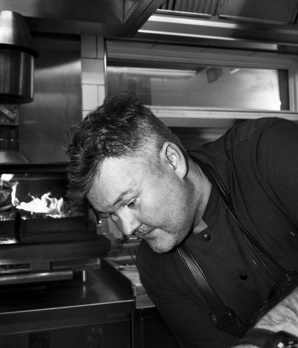
The Chef: Mathias Dahlgren
THE RESTAURANTS: RUTABAGA AND MATBAREN IN STOCKHOLM, SWEDEN
Mathias Dahlgren points to his childhood experience of growing up on a farm in northern Sweden as the reason he is so passionate about foraging and cooking with authentic, regional produce. Now, the talented chef has two Michelin-starred restaurants located in Stockholm’s luxe, celeb-favorite Grand Hotel. Matbaren is the more casual bistro while Rutabaga is a modern lacto-ovo-vegetarian concept. As Dahlgren explains, a fear of stagnation keeps him moving forward. “I have a strong desire to create a completely new dining concept. I want to play an active part in developing Swedish restaurant culture.”
THE MENU:
Dahlgren is a proponent of local ingredients like Gotland truffles, rich black fungi grown on a Swedish island that are high in vitamin C and fiber. You can enjoy them tucked into a dish of molten poached eggs before heading upstairs for a restful night’s sleep in a luxe DUXIANA bed. Dahlgren also experiments with dishes such as matjes herring with mustard seeds, salty lemon, and trout roe that are meant to be shared, or a tonka bean ice cream with dried cherries (one of the natural sources of melatonin, which helps promote sleep).
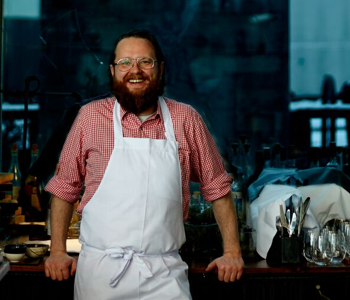

The Chef: Ragnar Eiriksson
THE RESTAURANT: DILL IN REYKJAVIK, ICELAND
Ragnar Eiríksson obtained Iceland’s first Michelin star in 2017. The culinary up-and-comer spent seven years cooking in Denmark before returning home to the increasingly popular tourism destination, Reykjavik. Dill seats fewer than 30 guests and Eiríksson’s most talked-about technique is using dried dung to smoke meat. “I wanted to emphasize traditional Icelandic flavors, and when there was no lumber and no coal, farmers would often burn dung to heat their house or smoke salmon. Rather than invent new techniques, I wanted to bring back this very old-school way of doing things.” You’ll often find the chef fishing and hiking (even in inclement weather) to source the area’s freshest ingredients.
THE MENU:
“Under the umbrella of neo-Nordic cooking you still have to make good food that people really want to eat,” says Eiríksson. For him, that includes a dish of duck jerky topped with dehydrated buttermilk, or barley with malt and a wild seabird called guillemot. Eiríksson also ferments the area’s tart, antioxidant-rich blueberries. “The berries and the root vegetables common in the Nordic diet all share something in common in that they are typically very deeply-hued,” says Kirkpatrick. “The richer the color of any plant, the more benefit it provides, because phytochemicals are responsible for color.” These phytochemicals include resveratrol, lycopene, and phenols, which have been linked to everything from better skin to cancer prevention.

